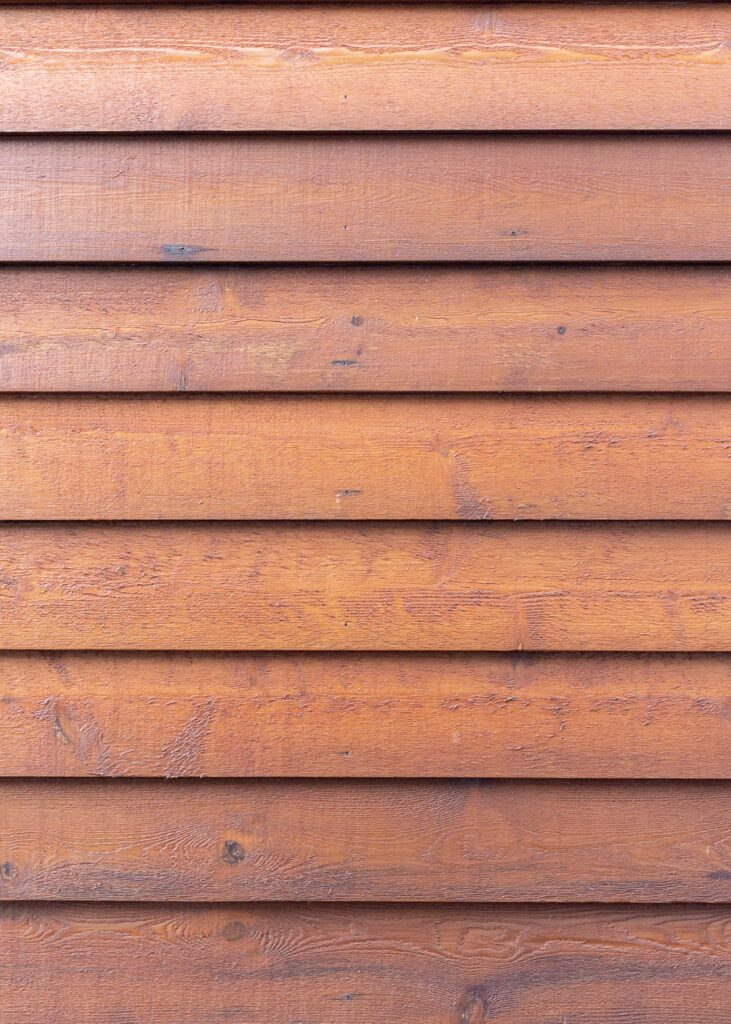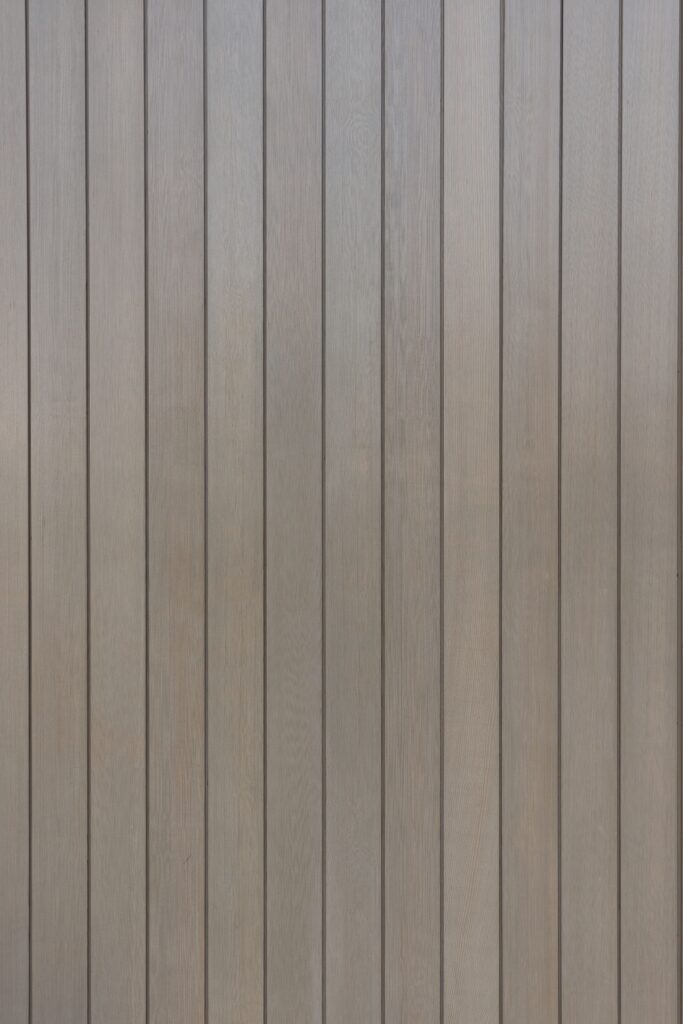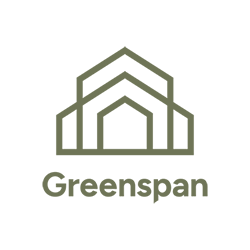Choosing the right materials for a build can make all the difference between a structure that stands the test of time and, quite simply, one that doesn’t.
In the vast landscape of construction materials, few options rival Western Red Cedar. It is renowned and admired by builders, architects and homeowners for its exceptional qualities and unparalleled combination of durability, beauty and sustainability. And, at Greenspan, we have been using it in our PreCrafting since 1976.
An introduction
Western Red Cedar (Thuja plicata) is native to the western part of North America, thriving in moist, mild conditions, with abundant rainfall. Of course, we have many of our own native timber species. But, due to its superior characteristics, Western Red Cedar was introduced as an alternative resource, with southeastern regions offering a similar temperate climate for the species to thrive.
Modern-day cultivation is mostly within controlled and managed environments such as plantations and forestry operations. This helps ensure sustainable harvesting practices and responsible resource management, balancing the timber’s demand with environmental impact.
With sustainability at the core of what we do, we only source from plantations where, for every tree harvested, at least one is planted.
So, what makes Western Red Cedar the go-to choice for building? Let’s take a look.
1. Durability and resistance
At the heart of Western Red Cedar’s appeal is its innate resistance to decay, insects and fungi. Unlike other woods that may require chemical treatment to stave off these nasties, Western Red Cedar boasts a natural defense.
Decay is a common concern with many types of wood, especially in outdoor settings where exposure to moisture and the elements is inevitable. However, the natural compounds and oils within Western Red Cedar provide resistance to moisture and impede the growth of organisms that cause decay. Insects, another common threat faced by wood, are also deterred by this natural chemical armour and its distinct aroma.
This natural fortress also stands up to the unpredictability of our climate and environment, with even the extremes of the Australian weather no match for Western Red Cedar’s natural durability and strength.
2. Stability and structural integrity
Another standout feature of Western Red Cedar is its exceptional dimensional stability. Most woods are susceptible to shrinkage, warping and twisting, which are caused by changes in moisture content, humidity and temperature. Not this wood. Western Red Cedar experiences minimal contraction and expansion under varying environmental conditions and possesses a natural ability to resist distortion.
This natural resilience allows construction and installation to be easy and precise, with a seamless finished look that will not change. Structures built from Western Red Cedar can be relied upon to maintain their original form and integrity over time, even those that are exposed to the extremes of environmental changes.
3. Natural insulator
Western Red Cedar is an excellent choice in building construction, due to its natural insulation properties. It has inherently low thermal conductivity which helps to regulate temperatures within buildings, something which is particularly beneficial in varying climates. It keeps interiors cooler in hot weather and warmer in cold weather, offering consistent year-round comfort. This in turn contributes to lower energy consumption and a smaller environmental footprint.
4. Workability
Western Red Cedar is a carpenter’s dream, standing out as a wood that responds favourably to different woodworking techniques, using a variety of hand and machine tools. It has a soft, straight grain that allows tools to glide smoothly through the surface, reducing effort and wear on tools and allowing for a remarkably high level of detail and precision. It is lightweight and has a low density, reducing labour intensity and increasing efficiency, making it quick to work with – an advantage for projects with a quick turnaround.
Its lightweight nature does not compromise on its exceptional structural integrity. And it also contributes to buildings having a lower overall weight which reduces load on other building elements, in turn maintaining their own structural stability.
5. Natural beauty
Aside from these practicalities, Western Red Cedar is a visually beautiful wood. It displays a symphony of colours ranging from pale yellow to rich reddish-brown tones. This diverse colour palette provides aesthetic versatility in building projects.
Western Red Cedar is also very receptive to various stains and finishes, making it a fantastic canvas for enhancing the natural hues and different tones. This is also an advantage when looking to achieve a specific design objective or match existing architectural elements.
The wood’s grain is fine, elegant and uniform with a consistent and smooth texture that enhances its visual appeal further. And then there is the distinctive aroma of Western Red Cedar to add to the sensory experience.



6. Sustainability
(We could write an entire article just on this topic and we probably soon will!)
For the most environmentally friendly, sustainable building resource, look no further than Western Red Cedar!
A renewable resource
As we previously touched upon, the cultivation of Western Red Cedar in Australia is well-regulated. Many plantations and forestry operations incorporate sustainable practices such as selective harvesting and replanting. This ensures forest health and regeneration, and ecological balance. In addition, Western Red Cedar is a species with a reasonably fast growth rate. This contributes to its status as a renewable resource, as the harvest-replant cycle can be achieved in a relatively short timeframe.
Carbon sequestration
During the growth phase, Western Red Cedar trees absorb and sequester carbon dioxide from the atmosphere. And younger trees collect this at a faster rate so it’s actually beneficial to cut down older trees and replace them.
Once harvested, Western Red Cedar retains a significant portion of this carbon, locking it away for the duration of its lifetime.
Energy efficient
Western Red Cedar has the lowest embodied energy of all mainstream building materials. The entire production process, from planting and harvesting to manufacturing, transportation and installation, uses the least amount of energy.
New emerging technologies and innovations are increasing yields from each log, decreasing waste and further reducing energy use. And, once built, the wood’s natural insulative properties create energy-efficient structures, reducing the need for heating and cooling systems.
Minimal waste
Western Red Cedar’s versatility and workability results in minimal waste when used in construction. Its adaptability allows it to be used efficiently in a variety of applications. Its workability allows for precision and fewer errors.
Low toxicity
Western Red Cedar contains low levels of toxic substances making it particularly safe for internal applications. The wood’s natural resistance to decay and insects often reduces the need for chemical treatments, which negatively impact the environment.
7. Low maintenance
By now, this point should be able to go unsaid! Durable and resistant to environmental factors, buildings constructed from Western Red Cedar will stay sound and look good for years, with minimal intervention and upkeep.
8. Versatility
This, too, should now be evident. Structurally adaptable to a variety of uses and applications, it also possesses aesthetic versatility. Whatever your preference in design and finish, Western Red Cedar is the ideal choice. It seamlessly adapts to various styles, from rustic barns to modern garden rooms. And it will harmonise equally as well in urban backyards or rural settings.
Western Red Cedar is more than a building material. It is an investment in quality, durability, versatility, sustainability, and beauty.
If you are looking to expand your living space with a garden room or acreage building, you can’t go wrong with Western Red Cedar.
And this is why we have been using this incredible wood for almost 50 years!

Inspired to use Western Red Cedar in your build?
Download our Design Price Guide and see what can be achieved.
Already downloaded our Design Price Guide and ready to take the next step?
Let’s meet. Book a callback from one of our friendly team.
